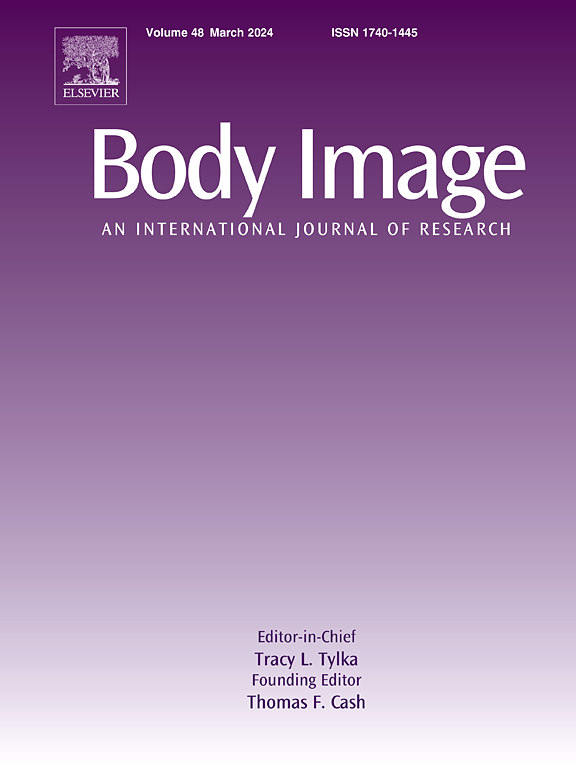Factor structure and psychometric properties of the Muscle Dysmorphic Disorder Inventory (MDDI) among transgender women
IF 5.2
1区 心理学
Q1 PSYCHIATRY
引用次数: 0
Abstract
Muscle dysmorphia (MD) is characterized by extreme preoccupation with insufficient muscularity that prompts pathological behaviors and distress/impairment. The Muscle Dysmorphic Disorder Inventory (MDDI) — a widely used measure of MD symptoms — has yet to be validated among transgender women, despite emerging evidence suggesting risk for muscularity-oriented concerns in this population. We examined the MDDI factor structure as well as the reliability and validity of its subscales in a sample of 181 transgender women ages 19–73 years who participated in a national longitudinal cohort study of U.S. sexual and gender minority adults. Confirmatory factor analysis was used to examine model fit for the original three-factor structure of the MDDI (drive for size, appearance intolerance, functional impairment). A re-specified three-factor model allowing covariance of residuals for two conceptually related items demonstrated good overall fit (χ2/df = 1.33, CFI =.94, TLI =.93, RMSEA =.06 [95 % CI =.01,.09], SRMR =.07). Moreover, results supported the internal consistency and convergent and discriminant validity of the MDDI subscales in transgender women. Findings inform the use of the MDDI among transgender women and provide a foundation to support future research on the MDDI and MD symptoms among gender minority populations.
变性妇女肌肉畸形障碍量表(MDDI)的因子结构和心理计量特性
肌肉畸形症(Muscle dysmorphia,MD)的特征是对肌肉不足的极端关注,这种关注会引发病态行为和痛苦/损害。肌肉畸形障碍量表(MDDI)是一种被广泛使用的测量 MD 症状的方法,尽管有新的证据表明变性女性中存在以肌肉为导向的担忧风险,但该量表尚未在变性女性中得到验证。我们研究了 MDDI 的因子结构及其子量表的信度和效度,研究对象是参与美国性与性别少数群体成年人全国纵向队列研究的 181 名年龄在 19-73 岁之间的变性女性。我们使用了确认性因子分析来检验 MDDI 原始三因子结构(对体型的驱动力、外表不容忍、功能障碍)的模型拟合度。重新定义的三因素模型允许两个概念相关项目的残差协方差,显示出良好的整体拟合效果(χ2/df = 1.33,CFI =.94,TLI =.93,RMSEA =.06 [95 % CI =.01,.09],SRR =.07)。此外,研究结果还证明了 MDDI 子量表在变性女性中的内部一致性、收敛性和区分性有效性。研究结果为在变性女性中使用 MDDI 提供了信息,并为支持未来对性别少数群体中的 MDDI 和 MD 症状的研究奠定了基础。
本文章由计算机程序翻译,如有差异,请以英文原文为准。
求助全文
约1分钟内获得全文
求助全文
来源期刊

Body Image
Multiple-
CiteScore
8.70
自引率
28.80%
发文量
174
期刊介绍:
Body Image is an international, peer-reviewed journal that publishes high-quality, scientific articles on body image and human physical appearance. Body Image is a multi-faceted concept that refers to persons perceptions and attitudes about their own body, particularly but not exclusively its appearance. The journal invites contributions from a broad range of disciplines-psychological science, other social and behavioral sciences, and medical and health sciences. The journal publishes original research articles, brief research reports, theoretical and review papers, and science-based practitioner reports of interest. Dissertation abstracts are also published online, and the journal gives an annual award for the best doctoral dissertation in this field.
 求助内容:
求助内容: 应助结果提醒方式:
应助结果提醒方式:


